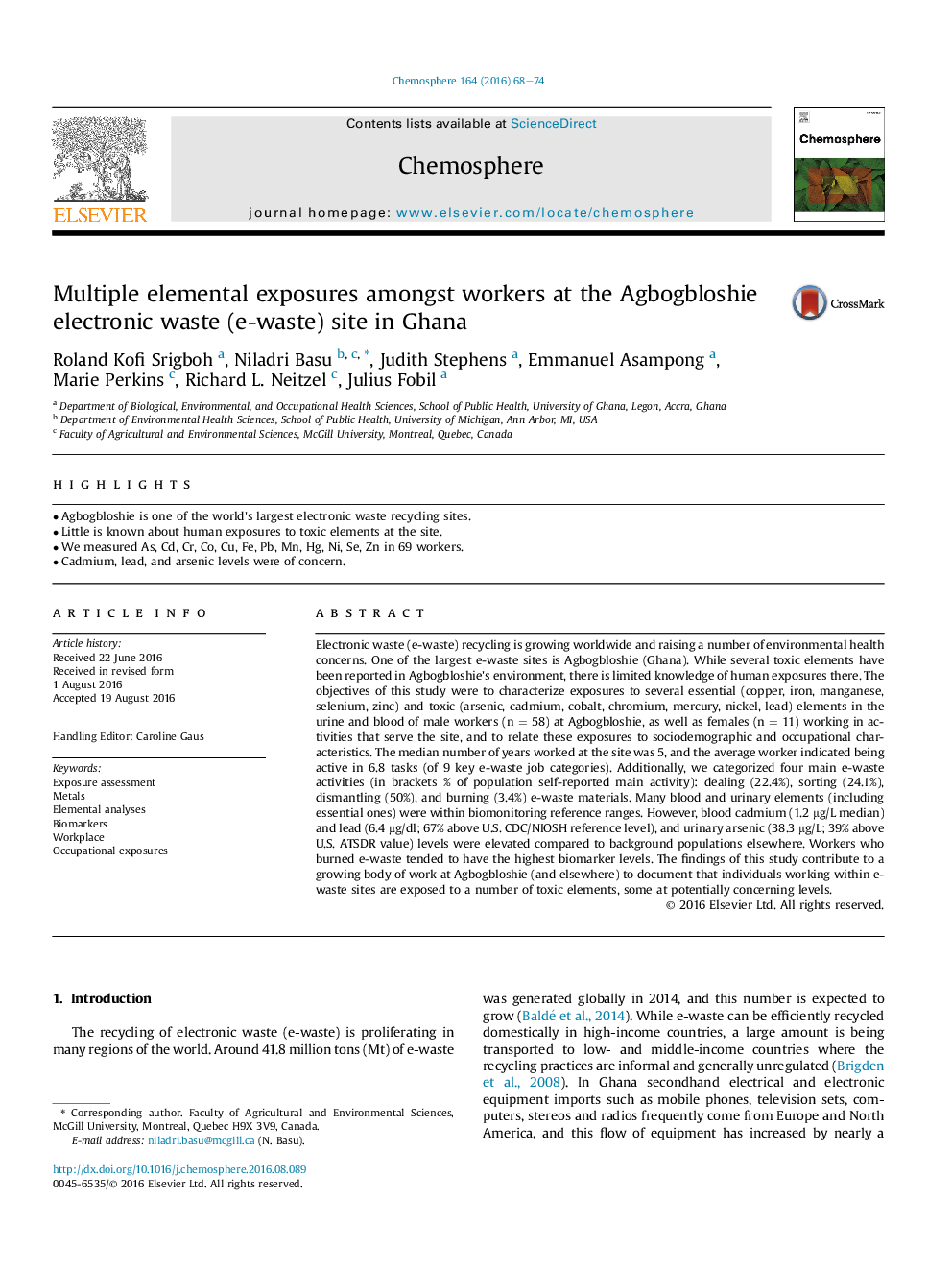| Article ID | Journal | Published Year | Pages | File Type |
|---|---|---|---|---|
| 6306005 | Chemosphere | 2016 | 7 Pages |
Abstract
Electronic waste (e-waste) recycling is growing worldwide and raising a number of environmental health concerns. One of the largest e-waste sites is Agbogbloshie (Ghana). While several toxic elements have been reported in Agbogbloshie's environment, there is limited knowledge of human exposures there. The objectives of this study were to characterize exposures to several essential (copper, iron, manganese, selenium, zinc) and toxic (arsenic, cadmium, cobalt, chromium, mercury, nickel, lead) elements in the urine and blood of male workers (n = 58) at Agbogbloshie, as well as females (n = 11) working in activities that serve the site, and to relate these exposures to sociodemographic and occupational characteristics. The median number of years worked at the site was 5, and the average worker indicated being active in 6.8 tasks (of 9 key e-waste job categories). Additionally, we categorized four main e-waste activities (in brackets % of population self-reported main activity): dealing (22.4%), sorting (24.1%), dismantling (50%), and burning (3.4%) e-waste materials. Many blood and urinary elements (including essential ones) were within biomonitoring reference ranges. However, blood cadmium (1.2 μg/L median) and lead (6.4 μg/dl; 67% above U.S. CDC/NIOSH reference level), and urinary arsenic (38.3 μg/L; 39% above U.S. ATSDR value) levels were elevated compared to background populations elsewhere. Workers who burned e-waste tended to have the highest biomarker levels. The findings of this study contribute to a growing body of work at Agbogbloshie (and elsewhere) to document that individuals working within e-waste sites are exposed to a number of toxic elements, some at potentially concerning levels.
Related Topics
Life Sciences
Environmental Science
Environmental Chemistry
Authors
Roland Kofi Srigboh, Niladri Basu, Judith Stephens, Emmanuel Asampong, Marie Perkins, Richard L. Neitzel, Julius Fobil,
